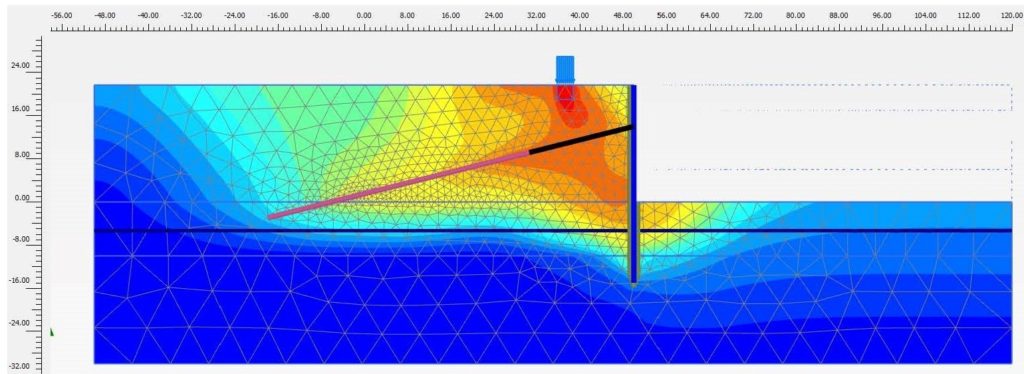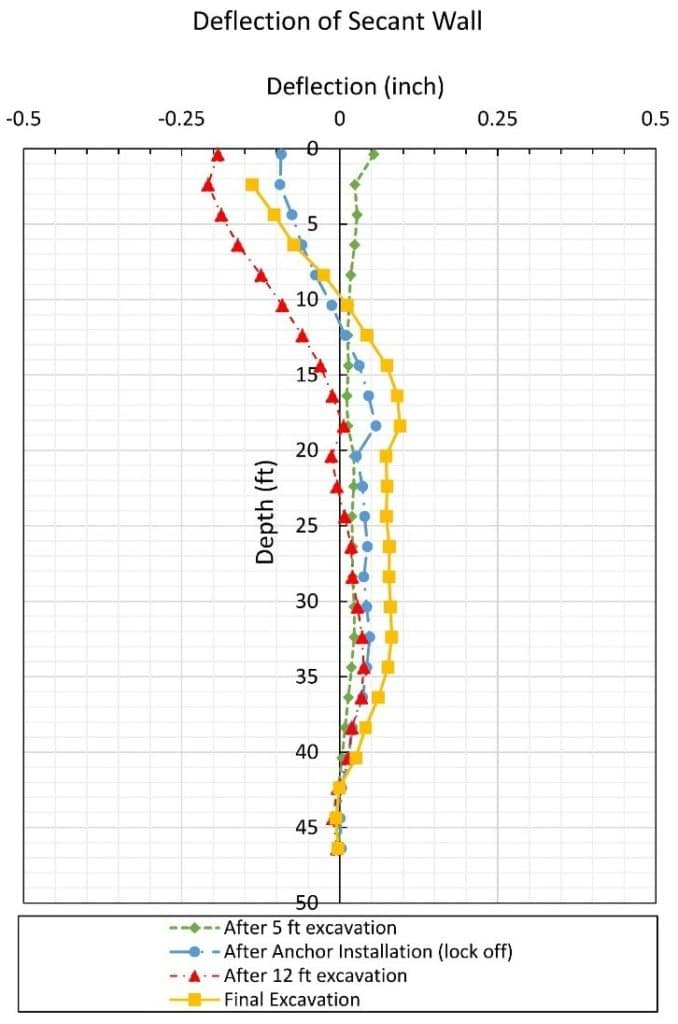Considering Movement of Excavation Shoring Systems
Are you shoring to limit excavation into a tree protection area? Are you shoring to excavate near an historic masonry church? Of course, we would all be more concerned about the shoring system chosen at the church, but which system? The first step is to choose the right system. Soil nail walls move 0.1% to 0.4% of the height of the wall or ¼” to a 1” for a 20-ft cut. Anchored soldier piles will move less as anchors are tensioned for the load the wall will encounter by the time you excavate to the bottom of the cut. For projects where movements are especially critical, shoring walls that eliminate shotcrete lifts or wood lagging such as a secant pile wall may be considered.
But it is still difficult to assess the amount of movement that may occur as construction methods may affect movement more than design. What is the height of each lift? Is each lift installed quickly after excavation? Are the lagging boards placed tight to the soil? Did a large storm pass halting construction for days? Construction methods have a large effect on movement.
Most shoring systems are designed to a minimum factor of safety. Permanent retaining wall structures are often designed with a factor of safety of 1.5 and temporary structures with a factor of safety of 1.35. Higher factors of safety result in a wall system under less stress and therefore less strain or movement. Sometimes walls are designed to performance requirements. This requires the designer to model the excavation and shoring system using a finite element analysis software such as Plaxis to estimate movement.
Finite Element Model of Anchored Secant Pile Wall Near a Heavy Building
Whether designed using a factor of safety or performance method, measuring movement as the excavation progresses will alert the contractor to any concerns prior to reaching the bottom of the excavation. One effective way to measure is using an inclinometer. Inclinometers track the movement (angle changes) from the bottom to the top of a casing over time. The casing can be installed in or behind the shoring wall. Contractors can monitor the movement as the excavation and wall installation progress. Figure 2 shows that the top of the wall leaned out after the first 5-ft cut, then the top was pushed back by the anchor, and as expected the largest movement outward occurred between the anchor and the bottom of the excavation (in this case less than 1/8”).
Wall Movements as Excavation Progresses
Ultimately the successful performance of a retaining wall shoring system depends on selection of the appropriate retaining wall system, competent design, high quality construction techniques, and monitoring of the progress.


